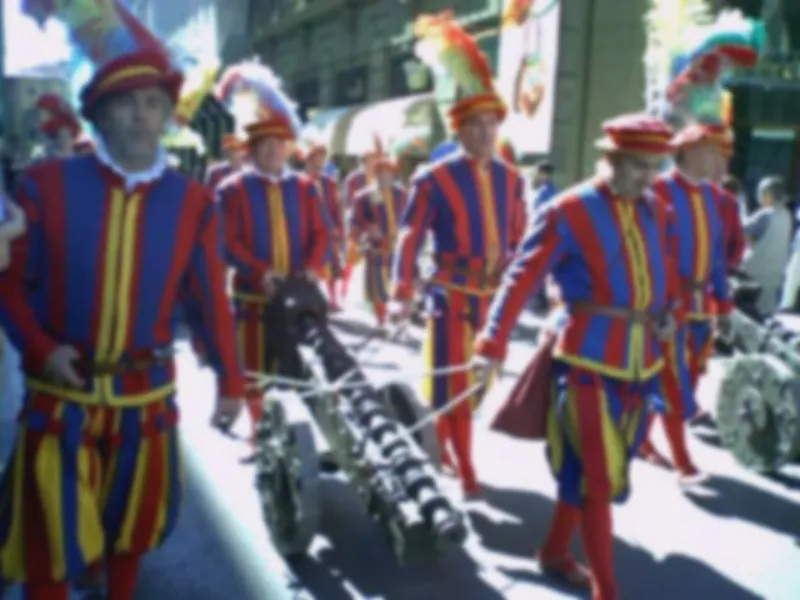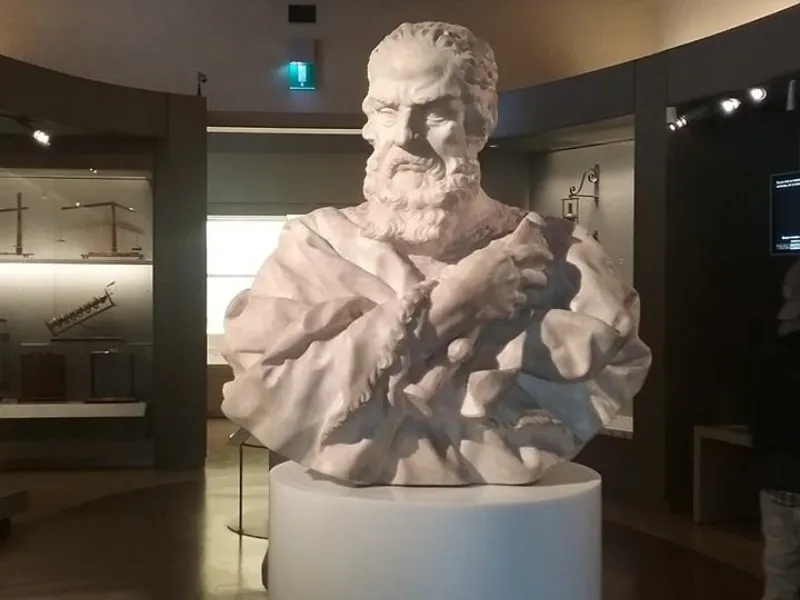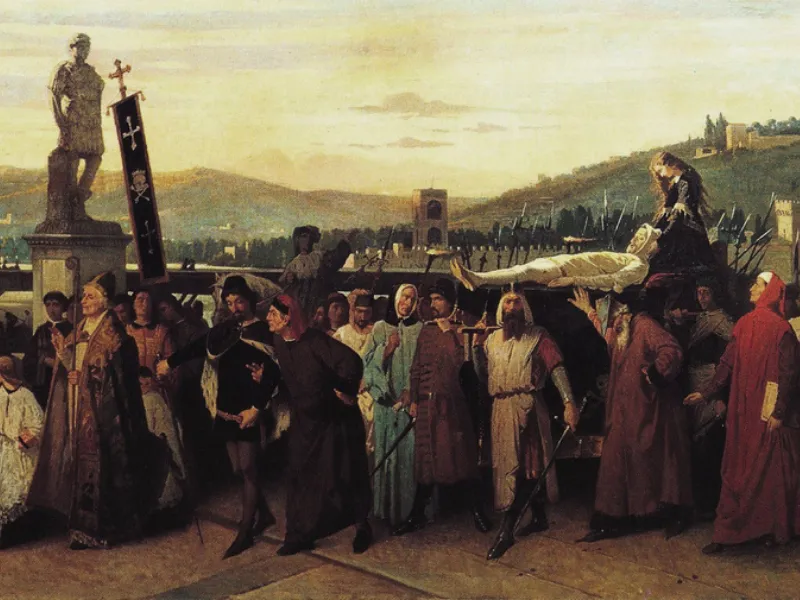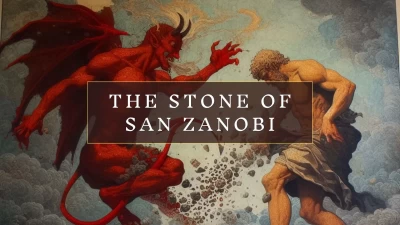Beatrice Portinari, the impossible love
Beatrice Portinari
The impossible love of Dante and its impact on literature
"Tanto gentile e tanto onesta pare / la donna mia, quand'ella altrui saluta, / ch'ogne lingua devèn, tremando, muta, / e li occhi no l'ardiscon di guardare"(So gentle and so virtuous she appears, my lady, when she greets others, that every tongue becomes, trembling, mute, and the eyes dare not gaze upon her). These are the opening lines of one of Dante Alighieri's famous sonnets, in which he extols the gentleness and virtue of his beloved, so much so that every tongue falls silent, trembling, and eyes dare not look at her. This woman becomes the poet's inspiring muse, to the extent that she features prominently in his greatest work, the Divine Comedy. Dante imagines meeting her during his journey through Paradise and having her as his guide after parting ways with his mentor, Virgil. But who is Beatrice really? Is she a historical figure or a literary creation? Is she one of the women Dante encountered in his life, or is she an idea born out of the stilnovista movement?
The debate on this subject is still ongoing and has involved scholars, writers, and students from every era. There is no definitive answer, but several hypotheses have been formulated over the centuries. Among these, one seems particularly convincing and has found consensus among many scholars, mainly based on the description provided by Giovanni Boccaccio. It is argued that Dante's Beatrice corresponds to a woman named Beatrice Portinari, also known as Bice, a Florentine who lived between 1265 and 1290, in the same Tuscan city where Dante was born. Beatrice died at a young age, possibly due to childbirth. The daughter of the wealthy merchant Folco Portinari and Cilia di Gherardo Caponsacchi, Beatrice was the same age as the poet and captivated him from childhood, leaving a profound sense of admiration in him. Nearly nine years passed before Dante had the opportunity to see her again, and in 1283, he movingly described this encounter in his work Vita Nova: "This wondrous lady appeared to me dressed in white [...] and as she walked along the street, she turned her eyes towards the spot where I stood, and with her ineffable courtesy, she greeted me in such a virtuous manner that in that moment, I felt as if I had touched the boundaries of bliss." (Questa meravigliosa donna apparve a me vestita di bianco [...] e, mentre passeggiava per la strada, volse gli occhi verso la parte in cui mi trovavo, e con la sua ineffabile cortesia mi salutò in modo virtuoso, tanto che in quel momento mi sembrò di toccare i confini della beatitudine)
The figure of Beatrice is an immortal symbol of love and inspiration for Dante and the world at large. Whether she existed in reality or was a literary transposition are questions that still arouse interest and curiosity, but her influence on the life and work of the poet is undeniable.
Altri articoli

The traditional florentine football game
At the end of the match the Florentine population answers "Viva Fiorenza" to the exhortation of the captain of the district who says; "Shout with me, Florence hurrah!".

Galileo Galilei kneels in front of the church
In 1632 the scientist published his "Discorso sui massimi sistemi" and he risked to be burnt at the stake

What is done is done
This killing was the beginning of the civil florentine war between the aristocratic families factions of the city: Guelphs against ghibellines.

Pietramala and Its Legend
This tale symbolizes the eternal struggle between good and evil, with San Zenobio prevailing through both strength and wit.

